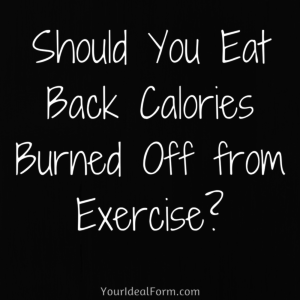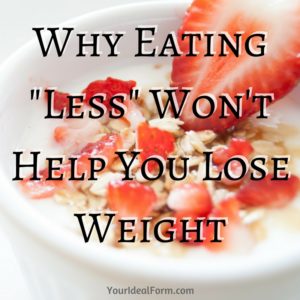
A question I see get asked a lot is whether or not one should “eat back” the calories burned during exercise. You’ve calculated your TDEE, and you’re eating at a deficit to lose weight*, but that exercise raises your TDEE some, so you’re now at a greater deficit. Should you eat those calories back?
This is a bit tough for me because to be perfectly honest, I just don’t get it. After doing all that work, why would you negate it all by eating it all back? There’s also a big potential pitfall with eating back your calories: overestimating how many calories you’ve burned and thus eating back more than what you just worked off. Studies show** that people regularly overestimate how many calories we burn during exercise. And it’s not our fault; cardio machines grossly overestimate how many calories you burn, and even fitness apps can just do a best guess based on national averages. So the treadmill/app tells you that you’ve burned 300 calories when it’s really 200, and you think that means you’ve earned that 250 calorie snickers bar. But in reality, you’ve undone all your hard work, and you’re now over your budget.
Studies also show we tend to be bad at estimating how many calories we eat***. In this case, we tend to underestimate the number of calories in the food we have. With more and more places putting calorie counts on menus, this is getting harder to do, but if this isn’t commonplace where you live yet, it can be easy to convince yourself that your post-workout smoothie is healthy, and therefore much lower in calories than it really is. Combined with the elliptical machine telling you that you burned more than you actually did, and it becomes really easy to eat more than your TDEE for the day.
So, what do you do if exercise leaves you woozy and you have to have something after your workout? Here are a couple of tips:
- Aim for eating back half the calories you burned at most.
- If working out is always leaving you feeling ravenous, try switching to lower-intensity exercise.
- A controversial opinion is to stop exercising all together and just focus on your diet.
- Try to think of any calories burned during exercise as merely a bonus or a turbo boost to get you to your destination faster!
*If you’re trying to gain muscle, you definitely want to eat back those calories, getting as much of them from protein as possible!
** http://www.ncbi.nlm.nih.gov/pubmed/26469988
*** http://www.ncbi.nlm.nih.gov/pubmed/1454084

